| Autres Noms | Lames de fabrication de sacs, couteaux de coupe de sacs, lames de perforation de sacs, lames en forme de T, couteaux dentelés, lame dentelée pour machine d'emballage verticale, couteau denté pour machine d'emballage verticale, lame dentelée pour emballage vertical, couteau denté pour emballage vertical, lame dentelée pour machine d'emballage verticale |
|---|---|
| Lieu d'Origine | Chine |
| Application | Plastique, emballages, sacs, rouleaux |
| Matériau | Acier Carbone |
| Numéro de Modèle | CV-BM |
| Service OEM | Disponible |
| Conditions de Paiement | L/C, T/T, Western Union |
| Emballage | Boîte en Carton, Caisses en Bois |
| Délai de Livraison | 7-20 Jours |
Partager sur :
Packaging blades, also referred to as packaging machine knives, are specialized cutting tools designed for integration into packaging machinery. These blades perform a variety of cutting, slitting, perforating, and sealing tasks essential for preparing and processing packaging materials like films, foils, paper, cardboard, and various other flexible or rigid materials used to contain and protect goods. The term “packaging blades” is a broad descriptor encompassing a wide array of blade types tailored to the specific demands of different packaging equipment and processes.
Packaging blades are fundamental components in a multitude of automated packaging processes across diverse industries. Their applications are extensive and include:
The selection of materials for packaging blades is crucial to ensure food safety (where applicable), resist corrosion from various product and packaging material interactions, and maintain a sharp, durable cutting edge for consistent, high-speed operation. Common materials include:
Surface treatments and coatings like Titanium Nitride (TiN) or Chromium plating are often applied to enhance surface hardness, reduce friction, and improve resistance to wear and corrosion, thereby extending the lifespan of packaging blades.
Packaging blades are manufactured in a wide variety of shapes and edge configurations to match the specific cutting or sealing mechanisms of different packaging machines:
The working principle of packaging blades varies depending on their function and the machine they are integrated into. Cut-off blades typically employ a shearing action against a fixed anvil or another moving blade. Sealing knives use heat and pressure to fuse and cut films. Rotary blades provide continuous cutting as they rotate against the material. The precision of the blade’s geometry, the sharpness of its edge, the applied force, and the synchronization with the machine’s operation are all critical factors in achieving clean, accurate cuts and reliable seals in packaging processes.
" N'hésitez pas à nous contacter !
Si vous ne trouvez pas la lame que vous cherchez, nous pouvons également la personnaliser. Consultez notre « Lames Sur Mesure» pour savoir comment !
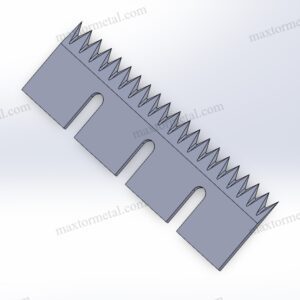

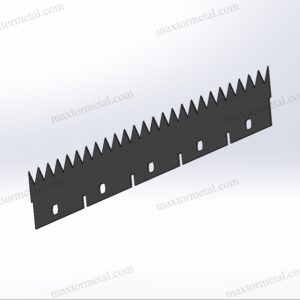

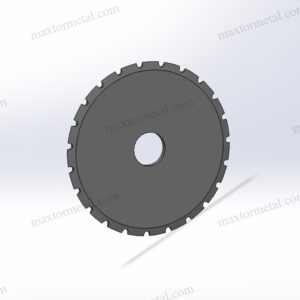
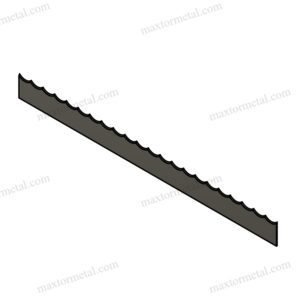
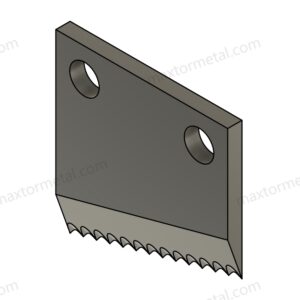


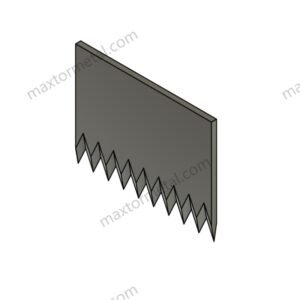
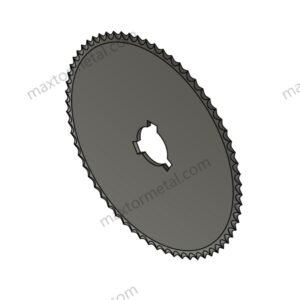

Profitez de la commodité d'une importation fluide. Du transport au dédouanement, nous gérons l'ensemble du processus. Il vous suffit de payer la TVA et d'attendre l'arrivée de vos marchandises.
Nous avons vu nos lames exceller dans d'innombrables applications et sommes prêts pour tout projet que vous nous confierez. Attendez-vous à la précision, à la durabilité et à des prix compétitifs inégalés.
Que vous fournissiez des dessins, des croquis ou des échantillons, nous pouvons concevoir et fabriquer pour vous. Nous avons également la capacité d'aider à modifier les conceptions et spécifications existantes pour améliorer presque toutes les applications d'outillage industriel. Veuillez contacter notre équipe de vente dédiée pour discuter de vos besoins spécifiques.
Une série de tests et d'inspections sont effectués pour contrôler la qualité, incluant l'inspection du premier article, l'inspection des matériaux entrants et les matériaux certifiés, l'inspection qualité en cours de production, et l'inspection qualité finale.
Que vous soyez un importateur, un distributeur, un grossiste ou un utilisateur final, nous vous accueillons. Bénéficiez de faibles quantités minimales de commande (MOQ), de demandes sans tracas et d'une plus grande liberté d'achat.
Considérez-nous comme votre moniteur exclusif. Nous vous fournirons régulièrement des mises à jour sur chaque étape cruciale de votre chaîne de production. Quelle que soit la distance, vous aurez un aperçu en temps réel de l'avancement de votre produit.
Nanjing Metal Industrial CO., Limited
Mingjue Industrial Park, Lishui, Nanjing, Jiangsu, China
Restez informé de nos dernières actualités.